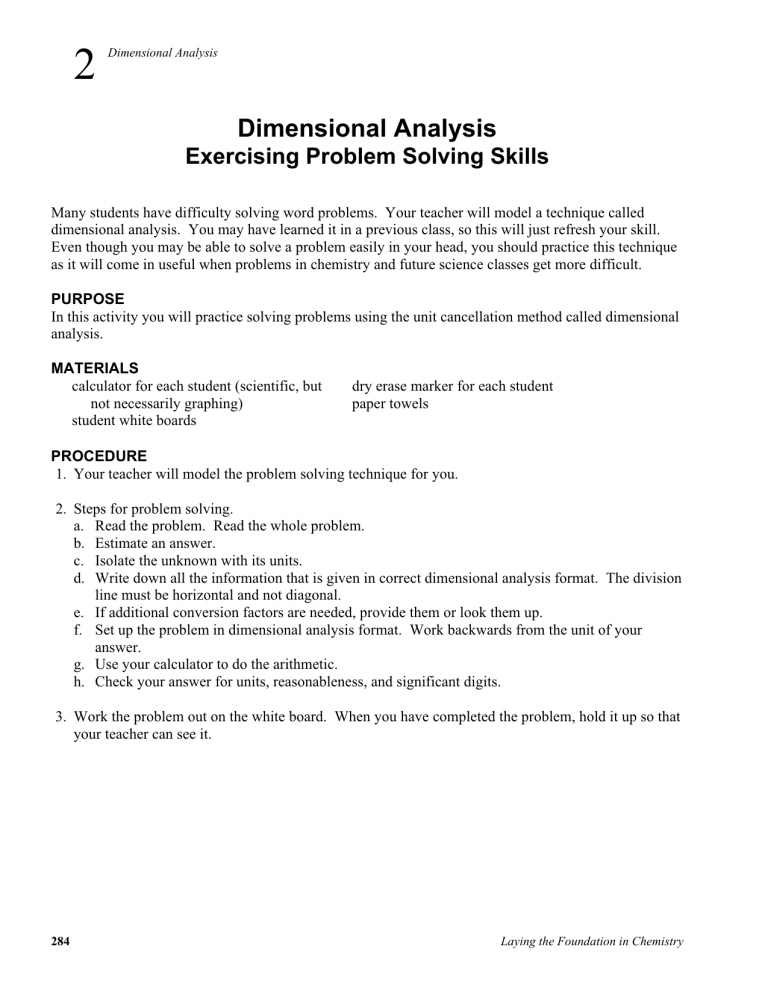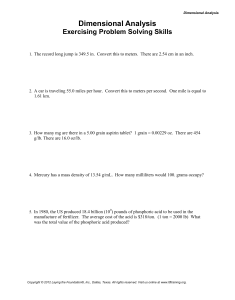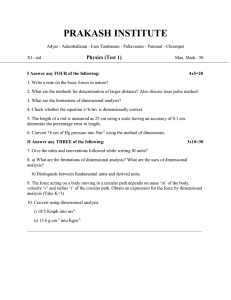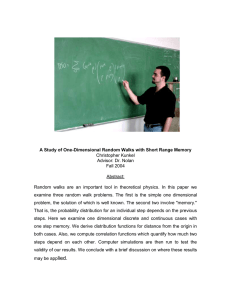
2 Dimensional Analysis Dimensional Analysis Exercising Problem Solving Skills Many students have difficulty solving word problems. Your teacher will model a technique called dimensional analysis. You may have learned it in a previous class, so this will just refresh your skill. Even though you may be able to solve a problem easily in your head, you should practice this technique as it will come in useful when problems in chemistry and future science classes get more difficult. PURPOSE In this activity you will practice solving problems using the unit cancellation method called dimensional analysis. MATERIALS calculator for each student (scientific, but not necessarily graphing) student white boards dry erase marker for each student paper towels PROCEDURE 1. Your teacher will model the problem solving technique for you. 2. Steps for problem solving. a. Read the problem. Read the whole problem. b. Estimate an answer. c. Isolate the unknown with its units. d. Write down all the information that is given in correct dimensional analysis format. The division line must be horizontal and not diagonal. e. If additional conversion factors are needed, provide them or look them up. f. Set up the problem in dimensional analysis format. Work backwards from the unit of your answer. g. Use your calculator to do the arithmetic. h. Check your answer for units, reasonableness, and significant digits. 3. Work the problem out on the white board. When you have completed the problem, hold it up so that your teacher can see it. 284 Laying the Foundation in Chemistry Dimensional Analysis 2 Name _____________________________________ Period ____________________________________ Dimensional Analysis Exercising Problem Solving Skills 1. The record long jump is 349.5 in. Convert this to meters. There are 2.54 cm in an inch. 2. A car is traveling 55.0 miles per hour. Convert this to meters per second. One mile is equal to 1.61 km. 3. How many mg are there in a 5.00 grain aspirin tablet? 1 grain = 0.00229 oz. There are 454 g/lb. There are 16.0 oz/lb. 4. Mercury has a mass density of 13.54 g/ml. How many milliliters would 100. grams fill? 5. In 1980 the US produced 18.4 billion (109) lb of phosphoric acid to be used in the manufacture of fertilizer. The average cost of the acid is $318/ton. (1 ton=2000 lb) What was the total value of the phosphoric acid produced? Laying the Foundation in Chemistry 285 2 Dimensional Analysis 6. On planet Zizzag, city Astric is 35.0 digs from city Betrek. The latest in teenage transportation is a Zeka which can travel a maximum of 115 millidigs/zip. On Zizzag the planet turns once on its axis each dyne. Their time system divides each dyne into 25.0 zips. How many dynes will it take Pezzi to get from Astric to Betrek to see his girlfriend? There is no telephone communication on zizzag. Do you think this relationship will last? 7. While prospecting in the North Woods, Joe found a gold nugget which had a mass density of 19.2 g/cm3. When I dropped it into water in a graduated cylinder, the water level increased by 15.0 mL. How many grams of gold did I have? 8. Light travels at a speed of 3.00 x 1010 cm/s. What is the speed of light in km/h? 9. A cheetah has been clocked at 112 km/h over a 100-m distance. What is this speed in m/s? 10. An electric current of 10.0 amperes is passed through a solution of gold (III) chloride for a period of 0.500 hours. After this period of time, how much gold has plated out on the cathode? There are 96,500 coulombs/mol of electrons. A mol of gold has a mass of 197 g/mol. An ampere is equal to 1 coulomb/second. It is necessary to transfer 3.00 mol electron/mol gold. 286 Laying the Foundation in Chemistry



